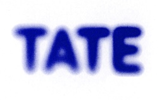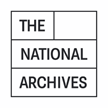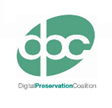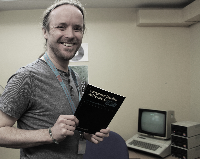DPC
5 ways to share your International Digital Preservation Day
There are two months until our very first International Digital Preservation Day (IDPD17), and already there’s a fantastic buzz about it. People have been tweeting and emailing me since we first announced it, asking for ideas for things they could do to join in the celebrations, the fun, the party!
My favourite suggestion yet has been someone contemplating dressing up as a floppy disk at work for the day – please don’t let me stop you.
What’s great is, even aside from the dressing up, there are LOADS of ways to get involved. Whether you’re a tweeter, facebooker, instagrammer, blogger, vlogger, filmmaker extraordinaire…or you just like a good old-fashioned face to face chat with a bunch of likeminded folk, you can do any or all of those things.
Out now: Digital Preservation Coalition unveils new Supporter program for 2017-2018
Added on 20 September 2017
The Digital Preservation Coalition (DPC) is delighted to share a full program of events for Supporters for the next 12 months. The program is filled with opportunities, activities and benefits designed to enable better and more meaningful communication between members and solution providers on ‘neutral’ ground, and in a way that all parties work more closely, effectively and harmoniously.
PASIG 2017 - A Twitter Retelling
The Twitter coverage of the 2017 PASIG Conference, held at the Oxford University Museum of Natural History, 11th-13th September, was enthusiastic and comprehensive. Here Simon Whibley gathers together his own tweets, along with those of other conference participants, to provide an overview of the key issues raised during those 3 days in Oxford. Simon attended PASIG 2017 with support from the DPC's Leadership Programme which is generously funded by our Commericial Supporters.
The Bit List Taskforce and Jury
The Digital Preservation Coalition gratefully acknowledges the support of the worldwide digital preservation community in the compilation of The BitList.
In particular, we are grateful to members of the 2022 BitList Taskforce who supported the interim review of 2021 entries to assess and identify 2022 trends towards increased or reduced risk:
-
Paul Stokes (Jisc)
-
Ruth Cammies (Open University)
-
Tom Shaw (Lancaster University)
-
William Kilbride (DPC)
The 2021 BitList Jury who supported the comprehensive review of existing and nominated entries in 2021:
-
Paul Stokes (Jisc)
-
Ruth Cammies (Open University)
-
Elizabeth England (National Archives and Records Administration)
-
Tom Ensom (Tate)
-
Emma Hancox (University of Bristol)
-
Patricia Herterich (Digital Curation Centre)
-
William Kilbride (DPC)
-
Micky Lindlar (Technische Informationsbibliothek (TIB)
-
Kirsty Lingstadt (University of York)
-
Annette Mills (National and State Libraries Australia)
-
Alexandra Mitchell (University of Salford)
-
Svenia Pohlkamp (nestor)
-
Arran Rees (University of Leeds)
-
Sebastian Roncin (Bacardi-Martini)
-
Anthea Seles (International Council on Archives)
-
Melanie Swalwell (Swinburne University of Technology)
-
Sara Day Thomson (University of Edinburgh)
-
Tamara van Zwol (Digital Heritage Network)
The 2022 revision and interim report reviews and feedback from the staff of the DPC and from the DPC’s Advocacy & Community Engagement Subcommittee:
-
Fabi Barticioti (LSE Library)
-
Ruth Cammies (Open University)
-
Lisa Griffith (Digital Repository of Ireland)
-
Emma Hancox (University of Bristol)
-
Patricia Herterich (Digital Curation Centre)
-
Annette Mills (National and State Libraries of Australia)
-
Mark Reynolds (Houses of the Oireachtas)
-
Sebastien Roncin (Bacardi-Martini)
-
Thomas Shaw (Lancaster University)
-
Paul Stokes (Jisc), Chair of the Advocacy & Community Engagement Subcommittee
-
Dorothy Waugh (University of York)
-
Emma Yan (University of Glasgow)
-
Daphne Yuen (HSBC)
The additional expertise provided generously by subject matter experts.
The Bit List Council
The production of the Global Bit List of Endangered Digital Species is made possible through the generous support of the Bit List Council and their respective networks. All entries to the Bit List are reviewed by these dedicated organizations which represent global expertise in the preservation of the listed digital species. The Digital Preservation Coalition gratefully acknowledges all of their support, commitment and contributions towards the publication of the Bit List Council.
 |
|||||||||||
 |
 |
 |
|||||||||
 |
 |
 |
 |
||||||||
 |
 |
 |
|||||||||
 |
 |
 |
 |
||||||||
 |
 |
 |
 |
||||||||
 |
 |
||||||||||
| |
 |
 |
|||||||||
 |
 |
||||||||||
 |
|||||||||||
Preservation with PDF/A: DPC publishes new Technology Watch Report
Added on 12 September 2017
The Digital Preservation Coalition (DPC) and Charles Beagrie Ltd have released the latest in their series of Technology Watch Reports today. Preservation with PDF/A by Betsy A. Fanning, AIIM provides a comprehensive review of the standard and its use, in order to help readers best ensure the integrity of their digital information.
An update to the original Technology Watch Report, Preserving the Data Explosion: Using PDF published in 2008, the report begins with a history of the PDF/A standard and its development, before moving on to an examination of conformance levels, validation methods and considerations to be made when choosing to use PDF/A for long-term preservation.
Web archiving for all! Web archiving with Webrecorder
Guest blogger Anna Perricci at Rhizome introduces us to the Webrecorder
In her recent post, Sara Day Thomson described how digital preservation can be a conversation stopper at parties and at passport control. I empathize though for me the puzzlement she describes is a real paradox: as our lives turn increasingly online so it seems obvious that some evidence of our collective neuroses, passions and creativities should be preserved. Perhaps the web’s most astonishing feature is the speed at which it has become indispensable. Yet as it becomes more crucial, so it grows in size; and as it grows so it becomes more complex: and so the tools necessary to manage and preserve those essential traces of our memory face a three-fold challenge of scale, complexity and expectation.
Enter Webrecorder: ‘web archiving for all!’
Appraising Appraisal and picking the right tool for the job
For the past few years I’ve been working as Digital Archivist in Special Collections at the University of Leeds Library, and it’s been a slow and often frustrating shuffle toward a digital preservation ‘solution’ here while we try to balance that good old three legged stool of technology, organisation and resources mentioned by Sarah Mason in a previous post. I deal with literary archives and collections which are either entirely born-digital or hybrids of paper and digital, and our digital preservation workflow includes the use of both BitCurator and Archivematica.
Risk Classifications
- Lower Risk - Digital materials are listed as ‘Lower Risk’ when it does not meet the requirements for other categories but where there is a distinct preservation requirement. Failure or removal of the preservation function would result in re-classification to one of the threatened categories.
- Vulnerable -
Digital materials are listed as Vulnerable when the technical challenges to preservation are modest but responsibility for care is poorly understood, or where the responsible agencies are not meeting preservation needs. This classification includes Lower Risk materials in the presence of aggravating conditions.
- Endangered -
Digital materials are listed Endangered when they face material technical challenges to preservation or responsibility for care is poorly understood, or where the responsible agencies are poorly equipped to meet preservation needs. This classification includes Vulnerable materials in the presence of aggravating conditions.
- Critically Endangered -
Digital materials are listed Critically Endangered when they face material technical challenges to preservation, there are no agencies responsible for them or those agencies are unwilling or unable to meet preservation needs. This classification includes Endangered materials in the presence of aggravating conditions.
- Practically Extinct -
Digital materials are listed as Practically Extinct when the few known examples are inaccessible by most practical means and methods. This classification includes Critically Endangered materials in the presence of aggravating conditions.
- Of Concern -
Digital materials are listed as Of Concern when an active member of the digital preservation community has expressed a legitimate concern but the concern has not yet been assessed by the BitList jury. They will be assessed for inclusion in the subsequent year.
Digitally Endangered Species
The DPC's 'Digitally Endangered Species' is a crowd-sourcing exercise to discover which digital materials our community thinks are most at risk, as well as those which are relatively safe thanks to digital preservation.
By compiling and maintaining this list over the coming years, the DPC aims to celebrate great digital preservation endeavors as entries become less of a ‘concern,’ whilst still highlighting the need for efforts to safeguard those still considered ‘critically endangered.’
We'd like you to add your nominations to the list by describing the kind of digital material it is, an explanation of why you think it is at risk, an indication of the risk level you would ascribe to it and the significance you think this has for our digital legacy.
Your nominations will be collated and evaluated by an international panel of experts in digital preservation, before being published. Your personal details will not be published in association with your nomination. We will simply use this information to provide context.
Entries are now closed, and the Bit List of Digitally Endanagered Species will be revealed on 30th November for International Digital Preservation Day.
Image courtesy of glennbphoto, The Atlas of Digital Damages


































































































































